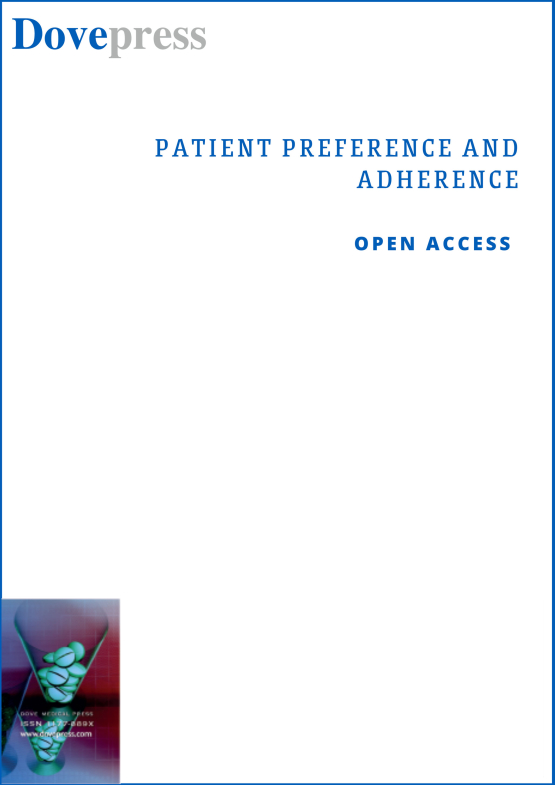Submit a Manuscript to the Journal
Patient Preference and Adherence
For an Article Collection on
Digital Healthcare Solutions for Patient Experience and Medication Adherence
Manuscript deadline


Article collection guest advisor(s)
Dr. Krzysztof Laudanski, MD, PhD,
Mayo Clinic Rochester, United States
laudanski.krzysztof@mayo.edu
Digital Healthcare Solutions for Patient Experience and Medication Adherence
The introduction of technology into healthcare has developed from humble beginnings into an essential for many aspects of medicine. Recently, as with many other industries, there has been increased interest in the digital solutions available worldwide. Such solutions include those developed in times of need, such as the introduction of telemedicine during the COVID-19 pandemic, and some have emerged in tandem with developments in other areas, including machine learning and artificial intelligence.
The potential benefits of digital solutions for patients are vast, and as this Article Collection aims to highlight, the application and implementation of digital technologies are crucial to their success in healthcare settings. This is with the end goal of maximizing the patient experience and using technologies to promote good health-related outcomes. One facet of this includes medication adherence, for both communicable and non-communicable diseases, which presents challenges to patient care, recovery and disease maintenance. Certain medical specialties may endure more challenges with medication adherence than others, but it is also crucial to recognise the patient in this process; for example, the reasons behind failure to adhere to medication regimens, side-effects, comorbidities and additional aspects of the patient experience – all of which are important to recognise for their care.
The importance of medication regimens in healthcare cannot be understated, and therefore, barriers to adherence ought to be overcome. This is with the aim of delivering the best-quality care. Digital healthcare solutions help healthcare professionals embark on a new age of medical care, including the ability to accommodate for various preferences and environments. This not only changes the practical aspects of providing care, but indeed how patients may perceive and experience healthcare settings across the lifespan. However, that is not to suggest that digital technologies can provide a ‘one-size-fits-all’ solution for all patients and all conditions. It is paramount to the future of digital healthcare technologies to investigate the specific relationships certain technologies have with multiple factors.
In order to provide effective care, digital healthcare technologies must be sensitive to patient’s authentic needs and experiences. This includes assisting with patient care beyond inpatient settings, as the power of preventative medicine and patient self-care continues to be highlighted, particularly in light of overburdened and underfunded global health systems. Knowledge of the digital healthcare technologies in development, and their implementation, is paramount to continuing serving patient needs as effectively as possible.
This Article Collection aims to highlight the value of digital healthcare solutions, such as telemedicine for patient care and experience. It is hoped that by launching this collection readers feel better empowered to utilise digital healthcare solutions and to research ways of improving these technologies, with the goal of enhancing the patient experience further. The collection is open to submissions from all disease areas and all patient groups, but submissions must have a focus on digital healthcare solutions and the patient experience.
Topics of interest may include, but are not limited to:
- Development and implementation of digital healthcare solutions and technologies
- Adaptations and strategies relating to patient groups, disease areas and more
- Relationship between digital healthcare and patient outcomes
- Telehealth, remote monitoring, electronic health records and artificial intelligence in healthcare settings
- Role of technology in diagnoses, medication adherence and overall patient experience
All manuscripts submitted to this Article Collection will undergo desk assessment and peer review as part of our standard editorial process. Guest Advisors for this collection will not be involved in peer-reviewing manuscripts unless they are existing members of the Editorial Board. Please review the journal Aims and Scope and Author Submission Instructions prior to submitting a manuscript.
The deadline for submissions is 21st November 2025.
Please submit your manuscript on our website, quoting the promo code IINOJ to indicate that your submission is for consideration in this Article Collection.
Dr. Laudanski is board certified anesthesiologist and critical care doctor. He holds the Regional Anesthesia Certificate from the American Association of Anesthesiologists. His clinical experience focuses on managing ECMO, VAD, postoperative recovery, sepsis, and senescence secondary to maladaptive allostasis after critical illnesses. Additionally, he has expertise in neuro-critical care and telemedicine. Krzysztof “Kris” Laudanski’s research focuses on the regulation of DNA in critical care illnesses survivors and innovation in healthcare. His passion is providing support to future generations of medical professionals. In these efforts, he creates a tailored plan that fits both the mentee’s and mentor’s interests, goals, and passion.
Benefits of publishing open access within Taylor & Francis
Global marketing and publicity, ensuring your research reaches the people you want it to.
Article Collections bring together the latest research on hot topics from influential researchers across the globe.
Rigorous peer review for every open access article.
Rapid online publication allowing you to share your work quickly.
Submission Instructions
All manuscripts submitted to this Article Collection will undergo desk assessment and peer-review as part of our standard editorial process. Guest Advisors for this collection will not be involved in peer-reviewing manuscripts unless they are an existing member of the Editorial Board. Please review the journal Aims and Scope and author submission instructions prior to submitting a manuscript.
